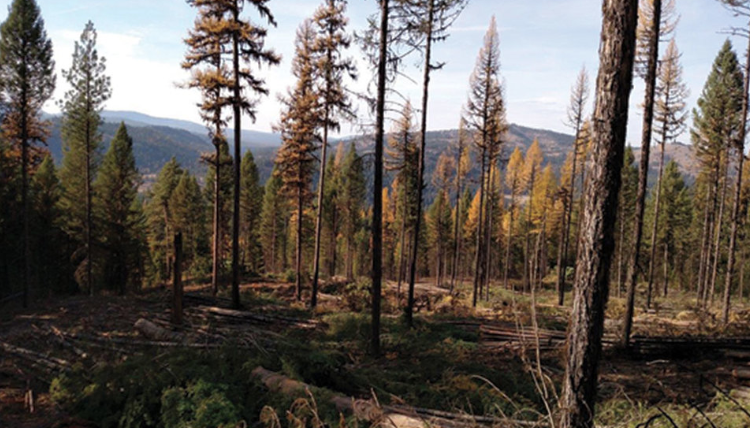An unseasonably hot summer, fungal infection and insects damaged tens of thousands of trees last year, according to an annual Washington Department of Natural Resources (DNR) forest health report.
DNR forest scientists and US Forest Service (USFS) jointly surveyed nearly 19 million forested acres throughout the state for their annual aerial detection survey. Of the 19 million acres examined, the aerial assessment found dead, defoliated and diseased trees on 555,000 acres throughout the state.
Scientists sited the record-breaking head dome in June, damage caused by various beetle species and sooty bark disease as the primary cause of tree death and distress throughout the state. The forest health issues are further compounded by the state experiencing recent spates of drought and climate change. In addition to record-breaking temperatures, the state faced one of the worst drought events since 2015 and another active fire season.
“This comprehensive accounting makes clear the impacts our worsening climate crisis have on our forests and the urgency of our efforts to combat our forest health crisis in Washington,” said Public Lands Commissioner Hilary Franz in a DNR news release. “Forests weakened due to drought, insects, or disease outbreaks are less resilient and pose a greater risk for catastrophic wildfires, which is why I fought so hard to pass House Bill 1168 last year to improve forest health and accelerate forest restoration across Washington.”
The DNR and USFS report underscores the important role forest management plays in promoting robust and resilient forests. After all, a managed forest is a healthy forest that is more resistant against disease, infestation, drought, wildfire and predation.
Thinning, selective harvests, prescribed fire and removing underbrush are critical forest management tools that advance forest health – especially as the state faces increasingly hotter, drier summers. Numerous studies have shown that overcrowding stresses tree health and impacts forest hardiness. Researchers also are finding that less crowded forests have a better chance of recovering from significant disturbances like disease outbreak, fire and drought.
The report noted that the highest concentration of tree damage and death was in western Washington along the Cascade foothills in King, Snohomish and Lewis counties, the Olympic Peninsula and Pacific County.
Fire activity and limited aircraft availability prevented last year’s survey from assessing 3 million acres. DNR and USFS will conduct another forest assessment this year. In addition, it also plans to conduct a full survey of western Washington maple trees since studies in Europe have found the fungus responsible for sooty bark disease thrives after hot, dry summers.
Read the complete 2021 Forest Health Highlights report here.
